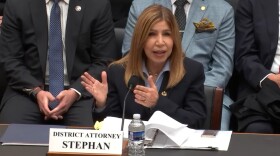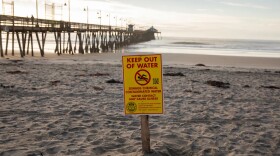What is the secret link between rocks and minerals, and every living thing on Earth?
Four and a half billion years ago, the young Earth was a hellish place — a seething chaos of meteorite impacts, volcanoes belching noxious gases, and lightning flashing through a thin, torrid atmosphere.
Then, in a process that has puzzled scientists for decades, life emerged. How did it happen?
On "Life's Rocky Start," NOVA joins mineralogist Robert Hazen on the rocky trail to resolve this enduring mystery.
As Hazen journeys around the globe — from an ancient Moroccan market to the Australian Outback — he advances a startling and counterintuitive idea — that the rocks beneath our feet were not only essential to jump-starting life, but then, as microbes flourished and took over the biosphere, life helped give birth to hundreds of minerals we know and depend on today.
This intriguing perspective of the co-evolution of Earth and life is reshaping the grand-narrative of our planet’s story.
In this stunning adventure through billions of years of history, the story of life on Earth is revealed as fundamentally interwoven with the epic, unfolding story of Earth itself.
1 of 14
Robert Hazen studies thin slices of rock under a microscope in his lab at the Carnegie Institution.
Courtesy of Doug Hamilton/ WGBH Boston
2 of 14
Goethite (California) from the collections of the Mineralogical & Geological Museum at Harvard University.
Courtesy of Rob Tinworth/ WGBH Boston
3 of 14
Calcite (Cumbria, England) from the collections of the Mineralogical & Geological Museum at Harvard University.
Courtesy of Rob Tinworth/ WGBH Boston
4 of 14
Azurite (Arizona) from the collections of the Mineralogical & Geological Museum at Harvard University.
Courtesy of Rob Tinworth/ WGBH Boston
5 of 14
Flourite (Cumbria, England) from the collections of the Mineralogical & Geological Museum at Harvard University.
Courtesy of Rob Tinworth/ WGBH Boston
6 of 14
Labradorite (Madagascar) from the collections of the Mineralogical & Geological Museum at Harvard University.
Courtesy of Rob Tinworth/ WGBH Boston
7 of 14
Rhodochrosite (Peru) from the collections of the Mineralogical & Geological Museum at Harvard University.
Courtesy of Rob Tinworth/ WGBH Boston
8 of 14
Malachite (Arizona) from the collections of the Mineralogical & Geological Museum at Harvard University.
Courtesy of Rob Tinworth/ WGBH Boston
9 of 14
Variscite (Utah) from the collections of the Mineralogical & Geological Museum at Harvard University.
Courtesy of Rob Tinworth/ WGBH Boston
10 of 14
A trilobite from the collections of the Museum of Comparative Zoolology at Harvard University.
Courtesy of Rob Tinworth/ WGBH Boston
11 of 14
Close up of one of the oldest fossils of life on Earth from 3.4 billion years ago.
Courtesy of Doug Hamilton/ WGBH Boston
12 of 14
A tooth from an ancient mega-shark found near the Chesapeake Bay, Maryland.
Courtesy of Doug Hamilton/ WGBH Boston
13 of 14
Martin Van Kranendonk and David Flannery inspect a 2.7-billion-year-old stromatolite fossil.
Courtesy of Doug Hamilton/ WGBH Boston
14 of 14
Living stromatolites at Shark Bay, Australia.
Courtesy of Doug Hamilton/ WGBH Boston
WATCH ON YOUR SCHEDULE:
This full episode is available to stream on demand with KPBS Passport, video streaming for members ($60 yearly) using your computer, smartphone, tablet, Roku, AppleTV, Amazon Fire or Chromecast. Learn how to activate your benefit now.
JOIN THE CONVERSATION:
NOVA is on Facebook, and you can follow @novapbs on Twitter. #NOVAnext



















